‘‘People working in design should be proactive’’
Interview with Päivi Tahkokallio by Gerrit Terstiege
Art and design historian Päivi Tahkokallio is one of the most prominent strategists and design activists in Finland. We wanted to know how the legacy of Dieter Rams is perceived in her country, and what current are relevant issues she considers worth promoting today.
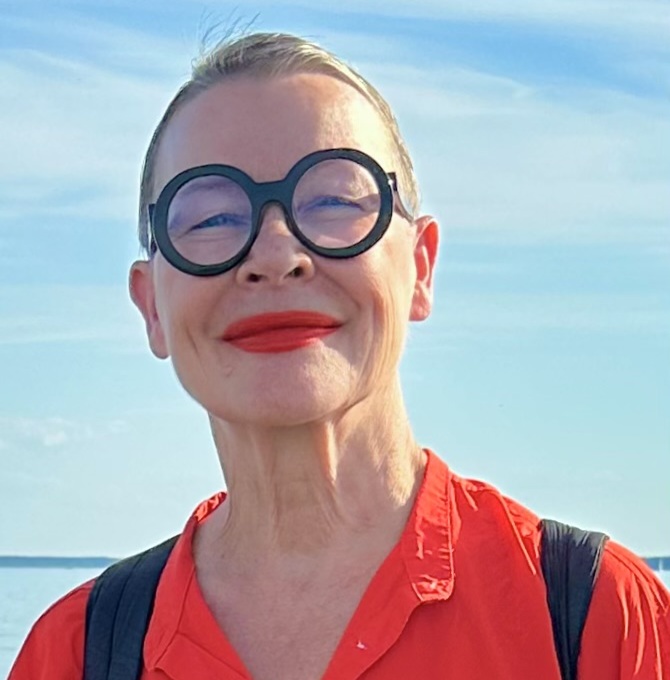
Päivi Tahkokallio visiting Oulu, the future European Capital of Culture (2026)
© Antti Kokkonen
GT: Let’s start with your nickname ‘Mother of Arctic design’. How did you get it? I assume it refers to your competences as an impulse giver and networker in Finland and beyond. Is that a correct assumption?
PT: Pretty much so. About fifteen years ago, I moved to the north of Finland, to Lapland. I had been living in the south of the country all my life and—like most people—never had paid much attention to the Arctic region. But moving up there started to change my perspective. It’s huge, one and a half times of Europe, a really large region with a very small population. It started to gain more attention about fifteen years ago, due to its natural resources and the change in geopolitics. It’s even more important now than in the past. That again made me think about the role of design, in developing the Arctic in a sustainable manner. And I just thought that design should play a stronger role. Designers should be involved in developing this region because it’s a very fragile environment and there’s a lot of diverse issues related to its development. I started to talk about Arctic design and edited a book on the topic for the local university with authors from all over the world contributing to it. In the last fifteen years the topic has gained more momentum with brilliant teachers and researchers in the academia. Word started spreading—also intensified by a design week in my hometown I was given the opportunity to put together. Our actions became part of the Finnish national Arctic politics as well. As a result, people started calling me ‘Mother of Arctic design’.


Two of the nature photos that Päivi Tahkokallio takes in her free time and posts on Instagram: on the left, Lake Inari with a meter-thick ice cover, on the right: spring sky at the same place
© Päivi Tahkokallio
GT: The term ‘Arctic design’ raises the question what it could be, since the region is not associated with design at all — an irritation on purpose, I suppose …
PT: Absolutely.
GT: And then you founded Tahkokallio Design+, a strategic design agency operating from the north of Finland with a focus on sustainable, social, and responsible design. Could you give us a few examples of the companies or the institutions that you work for?
PT: I have worked for both public and private organisations. We are currently shifting from product design to something which is more related to immaterial systems. Service design, for example. Or strategic design, to support the new directions that organisations are taking. That is what I have tried to do with my company. My business is very small and will remain so because I am not really interested in the growth of my own company, but rather in the growth of my clients. A good example for my professional endeavours is my work for the Regional Council of Lapland many years ago, supporting the Council to create a five-year development plan for the region. The extensive co-design phase involved more than 300 people including experts in various fields and residents. Today this is a more common practice but then it was the first time a region applied co-design methods at this scale. I am interested in that type of future-oriented processes, relevant for both the public and the private sector.
GT: So today you are more of a consultant to companies and institutions than a designer?
PT: It depends on how you define design. The way I define design is that it can relate not only to products and services, but to systems as well. Strategic design does not concern an object, but a system or a strategy. All fields and institutions can benefit from design methods. You could probably say that my definition of design is very broad. But I would say it definitely corresponds with Dieter Rams and his idea of quality, even though I don’t design objects. I’m not even involved much with processes where the outcome is an object. But I think industrial design, or any other kind of design, should reflect how the world is changing. Sustainability and regenerative design have become very important. Many of today’s challenges are global by nature. So, we have to understand the systemic level as well. That is a big challenge for design professionals. I don’t imagine for a minute that designers could solve the current challenges on their own. I think it’s very much about teamwork. Systemic challenges require collaborations between different professions. Design definitely needs to be part of it. Take Dieter Rams’ famous motto ‘less, but better’, for example. In today’s world it can and should be applied to all fields. A case in point is the built environment, because most of the buildings we will have in the future have already been built. We therefore need to carefully consider what we should do with those existing buildings. We can’t tear all of them down and build new ones. That would not be acceptable from a climate change sensitive point of view.
GT: That was the usual procedure in the 1960s and 1970s in many German cities, unfortunately.
PT: Well, yes, I think that happened in many European countries, England, and the Nordic countries too. It often involved a different ethos, a different approach to what development meant. It meant building new and building more. But today, we need to think about improving existing designs, architectures, and environments. And of course, regenerative and circular design is part of that development. We have to pay attention to the circular lifespan of a product. A lot has to change in that sense. Those changes are already taking place. But whether there’s enough taking place — that is the question.
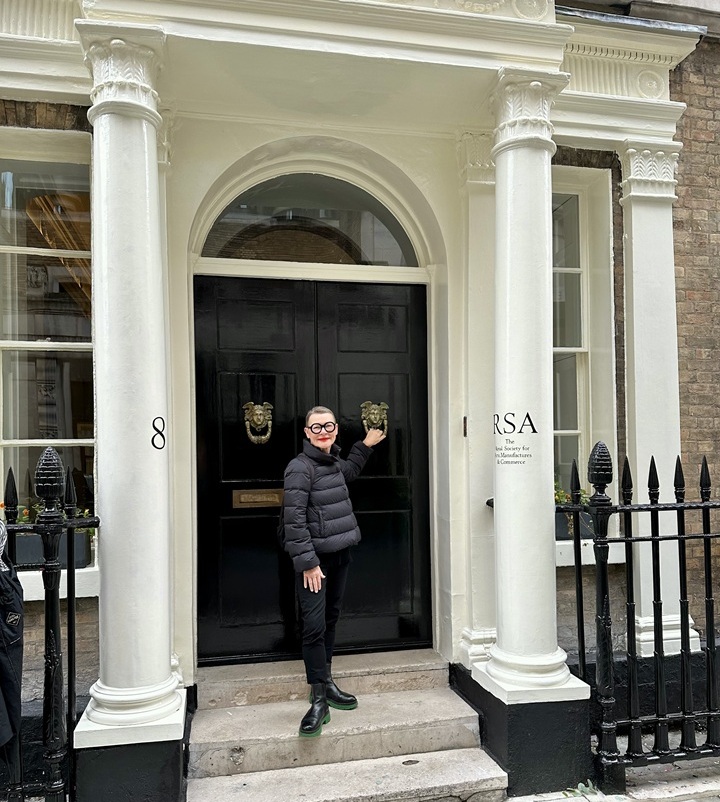
Päivi Tahkokallio symbolically knocking on the door of the Royal Society of Arts in London, 2023
© Antti Kokkonen
GT: You were the president of BEDA, the Bureau of European Design Associations. The development of a design policy in Europe and for Europe has long been on BEDA’s agenda. In a nutshell, what were your main goals as president?
PT: Well, definitely one of the main goals was to be heard by the European Union. After all, BEDA is a small organisation. We tried to carefully identify the topics we should pay attention to. People working in design should be proactive. So, we analysed what is important for Europe’s future. From the point of view of design, sustainability and regeneration are critical issues, so is digitalisation, as well as values. These topics will, without question, affect the lives of all Europeans. Those of designers too. Then we started to talk systematically with different departments in the European Union, the Commission, to explain our point of view, why we should be heard and why it’s important that design is part of various policies—industrial policy, for example. Being heard is the first step to an active dialogue.
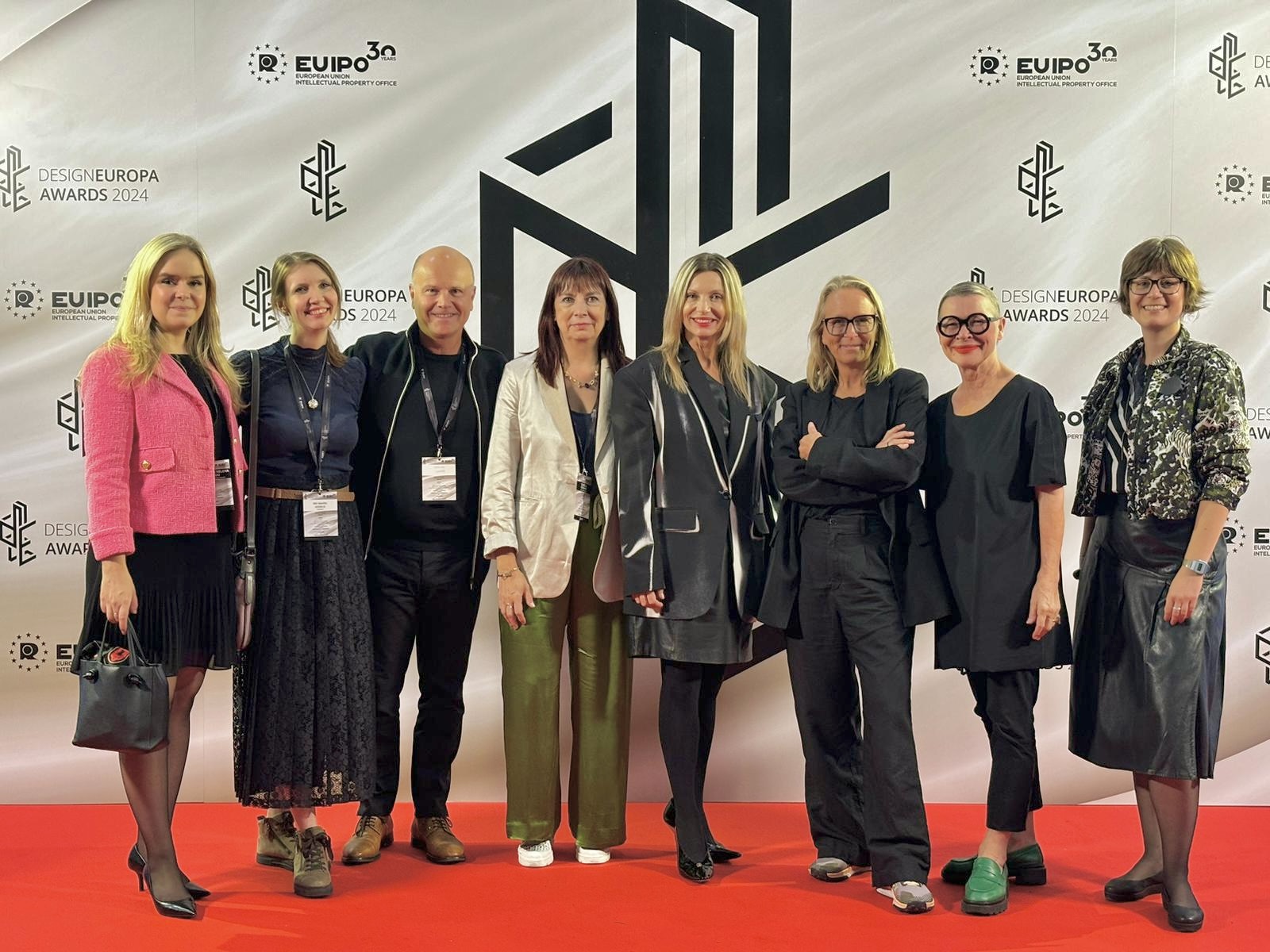
Group photo at the EUIPO DesignEuropa Awards Ceremony in Riga in September 2024,
Päivi Tahkokallio: 2nd from the right
© EUIPO
GT: What challenges are young designers faced with in Finland today?
PT: In Finland, many challenges are the same as in other countries in Europe. One common challenge is that work life has changed. Permanent jobs have been replaced by short-term contracts. Young designers need to be ready to change jobs, sometimes after a very short period. It creates uncertainty, and it makes it hard for young people to see how they can have a real impact through design when rapid change seems to be the only constant.
GT: Scandinavian design was very in vogue in the 1950s when Braun design took on a new form. How do you see the work of Dieter Rams today and its relevance for the foreseeable future? You have already mentioned his concept of ‘less, but better’. and there is the aspect of simplicity that characterises his work, but also design in Finland, Denmark, and Sweden.
PT: Yes, I think the design language we use in the Nordic countries, in Finland especially, is closely related to that of Dieter Rams. We Finnish people are very pragmatic. Ease of use is really important to us. And so are aesthetics. The functional qualities are as important to us as the aesthetics.
GT: What’s special about his design approach is that it never involves a pragmatism of use without a refined aesthetic dimension. And vice versa. Both come together and are very obvious in any object designed by Rams.
PT: Exactly, and this is also very true of design in Finland generally.
GT: Yes, but in the eyes of the world, Scandinavian design is still very much rooted in what is often referred to as the mid-century era … Has the world, in your opinion, yet to catch up with the present, or is that category fine with you?
PT: I think you are both right and wrong! (laughs) It’s a complex issue because we in Finland do, to a certain degree, celebrate our designs from the 1950s and later decades, and yet, to a certain degree, we resist them. The simple elegance, being true to the material, and the ease of use in design that have lasted up until now and will continue to endure in the future as well. Sometimes we are torn between liking and disliking our design heritage as we seem to assume that if we use and value the designs of the past decades still today, we are not capable of renewing our design language. But I believe that is a misconception. Our design ethos very much corresponds with Dieter Rams’ ‘less, but better’ approach, and it is especially relevant now that we need to create sustainable solutions for a circular economy and to better understand the life cycles of products. For this reason, I’m happy with this situation. I think there will always be enough place for new design, but it doesn’t necessarily mean that we should forget our past. I believe they can live side by side, especially in this time of climate change mitigation.
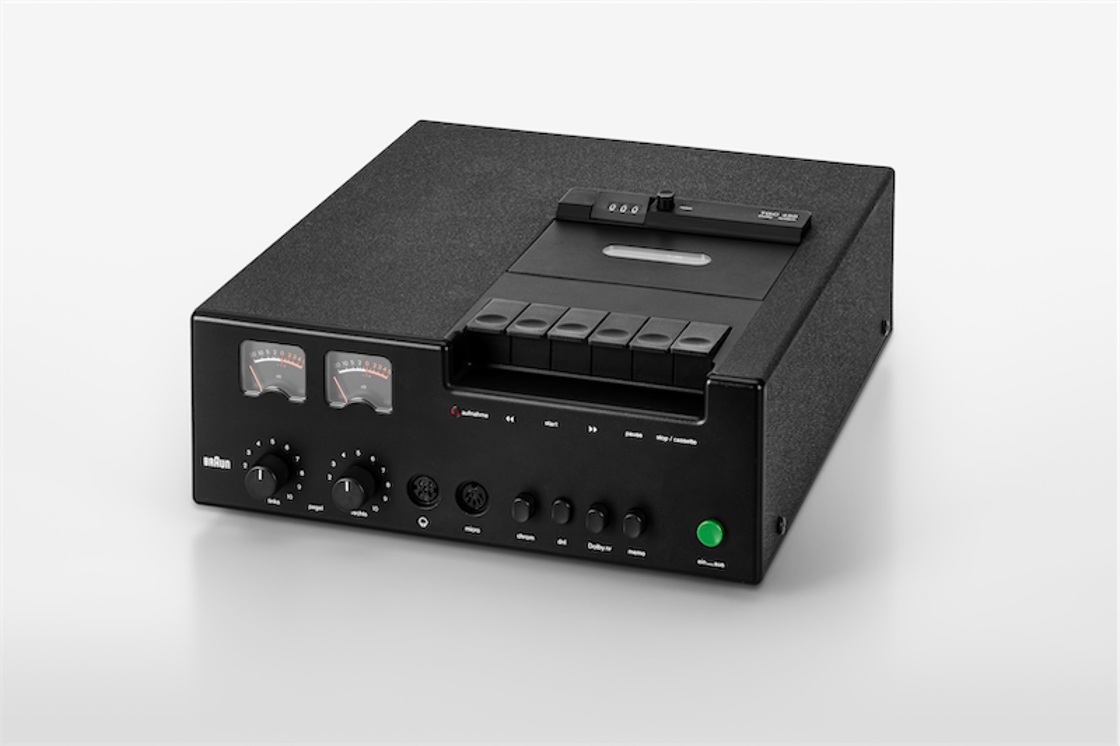
Black, rectangular, with a distinctly technical look: Dieter Rams' TGC 450 cassette recorder (1975) could be seen as a "typically masculine" design. Or as a neutral "universal design"—depending on your point of view.
© rams Foundation, Photo: Andreas Kugel
GT: Let’s take a look at yet another widespread cliché: the very minimalistic, rectangular and technical Braun design is often seen to be more appealing to men. Would you agree?
PT: No, I would not agree. This might well be the Finnish in me speaking, but I find Braun design very appealing and I do not especially consider it anything other than functional and aesthetic at the same time—qualities I believe we appreciate independently of the user’s gender. An interesting question would be: does design have a gender dimension? Does the gender of the designer affect the end product, or is the gender of a product’s user somehow a decisive element in certain contexts? It would certainly be worth looking closer into these aspects.
GT: To me, Fiskars is a good example in this respect. The design of its tools seems to be universal and somewhat ‘neutral’ …
PT: Definitely, Fiskars with its world-famous scissors and gardening tools, and its ambition to improve everyday life for all is indeed a good example of this approach. Generally speaking, I do not think that design should be targeted at specific genders. Why not? Because gender is something the user of a product or service decides for themselves, according to the user’s identity. It’s not something a designer or a company should decide for the user. I appreciate an approach where both the designer and the company are motivated and committed to consider that their product or service will serve as wide a diversity of users as possible. This of course means that function needs to be seen as an important design criterium.
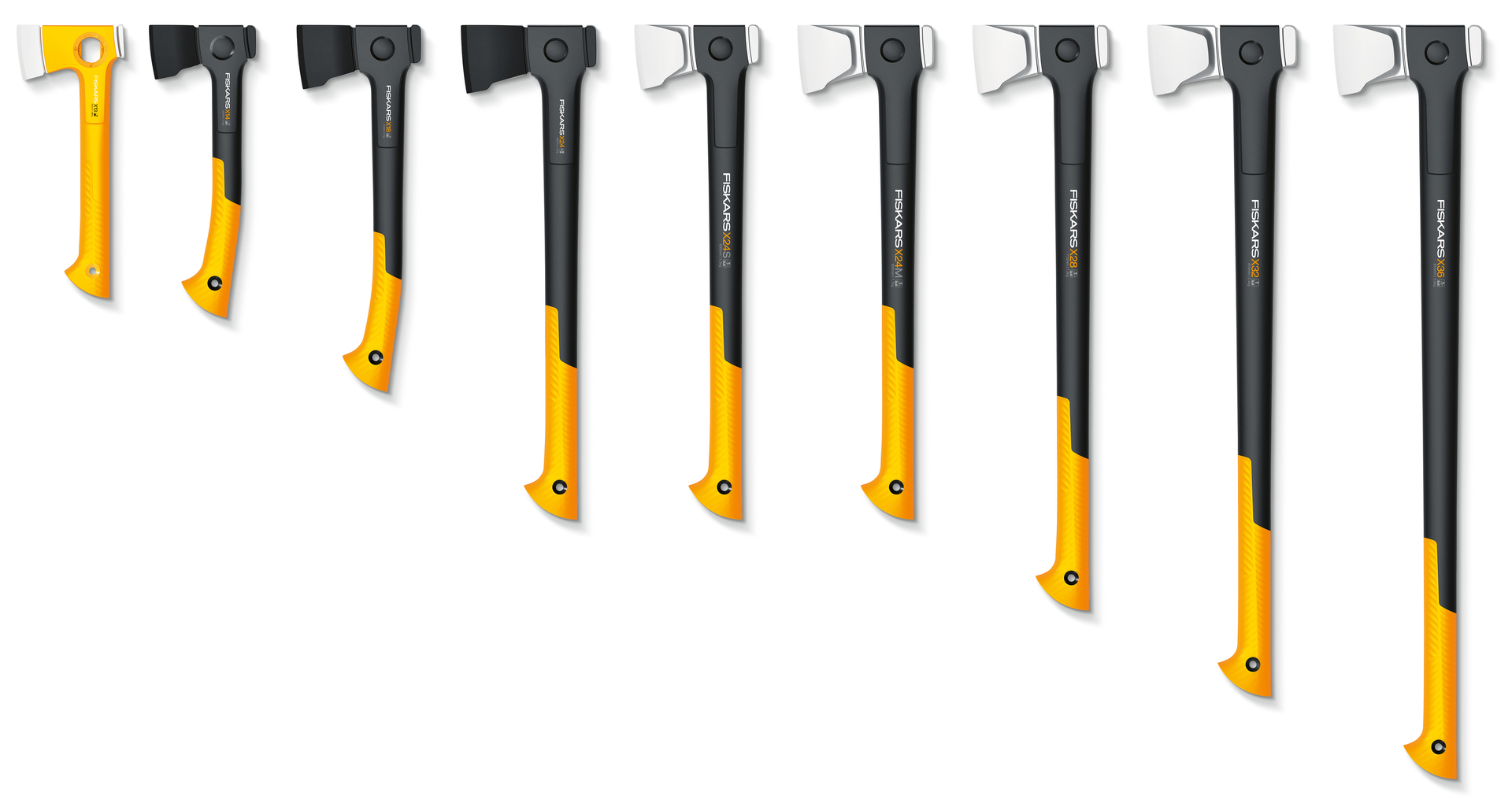
Universal design with international success: Fiskars axes in different sizes in the orange-black contrast so typical of the Finnish manufacturer
© Fiskars
GT: As disciplines, design and architecture are very closely related, yet in my experience, designers and architects rarely meet and talk with each other about their tasks. How could the two professions interact and learn more from each other?
PT: I very much hope that designers and architects do meet and discuss as, like you said, the two disciplines are closely related. For me, it is, first and foremost, because they are both creative disciplines that affect the everyday life of all of us. Education is one good way to encourage interaction. In Finland, the School of Art, Design and Architecture at Aalto University includes these disciplines, and the whole university itself was born out of the merging of three universities from technology, economics, and art and design fields. Oulu, a city of 210,000 residents in the north of Finland, will become the European Capital of Culture in 2026. During that year, local design and architecture organisations will produce exhibitions, initiate dialogues and other events together. Ideally, both disciplines and professions should learn, work, find solutions, and serve end users together . Policies and legislation can push towards this goal, but of course it is individuals who need to make it happen.
More Contributions
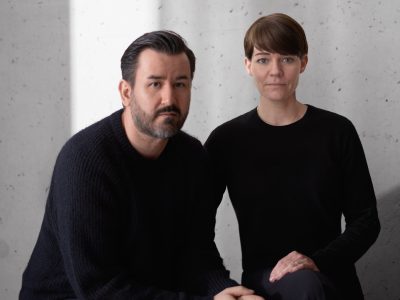
Esther and Dimitrios Tsatsas
An unknown design by Dieter Rams from the 1960s made the young Frankfurt bag brand TSATSAS even better known internationally. We spoke to the German-Greek couple about the hurdles they had to overcome to develop from designers to entrepreneurs.
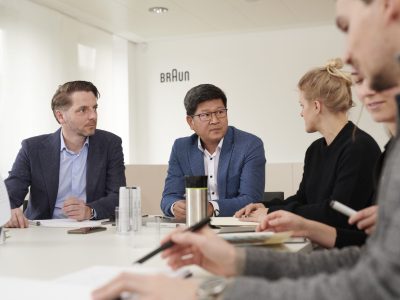
Duy Phong Vu and Markus Orthey
In our interview with entrepreneur Fabio De’Longhi, it became clear how important it is to him to maintain the Braun culture and tradition. Duy Phong Vu and Markus Orthey, two designers who have long been the shaping present-day version of Braun Household, while also developing it for the future, now share their thoughts.

Jürgen Werner Braun
The achievements of the long-standing Managing Director Jürgen Werner Braun in terms of design in Germany in general and his commitment to the Franz Schneider Brakel company in particular continue to have an impact to this day. Here he talks about how design exhibitions can provide concrete impetus for the economy. And why, for him, Stanley Kubrick anticipated artificial intelligence.
/magazin/interviews/paivi-tahkokallio/